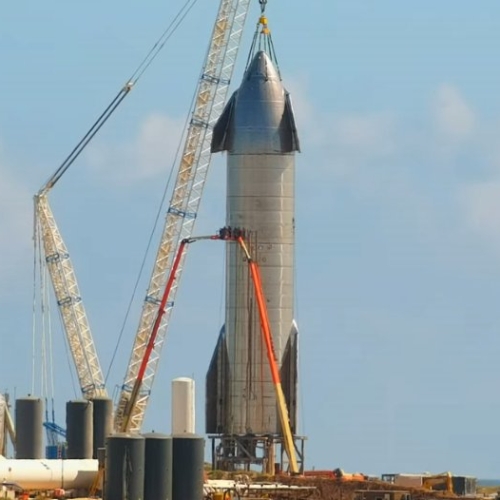NASA officially expresses concerns about proposed private communications constellation
For what appears to be an unprecedented action, NASA has officially expressed opposition to a proposed private satellite constellation by the company AST & Science.
NASA’s position was released in a comment to the FCC, where the company has requested a communications license to operate its satellites.
At issue are plans put forth by AST & Science, which intends to build a constellation of more than 240 large satellites, essentially deploying “cell towers” in space to provide 4G and possibly 5G broadband connection directly to cell phones on Earth. The company, based in Midland, Texas, calls its constellation “SpaceMobile” and has raised an estimated $120 million.
The space agency felt compelled to comment on AST’s proposal for several reasons. Most notably, the proposed altitude for the SpaceMobile constellation lies near the “A-Train,” a group of 10 Earth-science monitoring satellites operated by NASA and the US Geological Survey, as well as partners in France and Japan. “Historical experience with the A-Train constellation has shown that this particular region of space tends to produce a large number of conjunctions between space objects,” the NASA letter states.
The satellites are also very large. In order to provide service, AST plans to build spacecraft with large phased array antennae—900 square meters. According to NASA, in planning for potential conjunctions with other satellites and debris in this orbit, this would require proscribing a “hard-body radius” of 30 meters, or as much as 10 times larger than other satellites.
Maneuvering around the proposed SpaceMobile constellation would be extraordinarily taxing, NASA said. “For the completed constellation of 243 satellites, one can expect 1,500 mitigation actions per year and perhaps 15,000 planning activities,” the space agency stated. “This would equate to four maneuvers and 40 active planning activities on any given day.”
The company has said it is willing to work with NASA to ease its concerns. For NASA to take this particular step however is most strange, especially considering the size of this constellation, 240 satellites. This number is tiny compared to the multi-thousands being proposed by SpaceX, Amazon, and OneWeb. Their large size footprint certainly could be a factor, but it does seem puzzling for the space agency to pick out this particular constellation for opposition, and none of the others.
For what appears to be an unprecedented action, NASA has officially expressed opposition to a proposed private satellite constellation by the company AST & Science.
NASA’s position was released in a comment to the FCC, where the company has requested a communications license to operate its satellites.
At issue are plans put forth by AST & Science, which intends to build a constellation of more than 240 large satellites, essentially deploying “cell towers” in space to provide 4G and possibly 5G broadband connection directly to cell phones on Earth. The company, based in Midland, Texas, calls its constellation “SpaceMobile” and has raised an estimated $120 million.
The space agency felt compelled to comment on AST’s proposal for several reasons. Most notably, the proposed altitude for the SpaceMobile constellation lies near the “A-Train,” a group of 10 Earth-science monitoring satellites operated by NASA and the US Geological Survey, as well as partners in France and Japan. “Historical experience with the A-Train constellation has shown that this particular region of space tends to produce a large number of conjunctions between space objects,” the NASA letter states.
The satellites are also very large. In order to provide service, AST plans to build spacecraft with large phased array antennae—900 square meters. According to NASA, in planning for potential conjunctions with other satellites and debris in this orbit, this would require proscribing a “hard-body radius” of 30 meters, or as much as 10 times larger than other satellites.
Maneuvering around the proposed SpaceMobile constellation would be extraordinarily taxing, NASA said. “For the completed constellation of 243 satellites, one can expect 1,500 mitigation actions per year and perhaps 15,000 planning activities,” the space agency stated. “This would equate to four maneuvers and 40 active planning activities on any given day.”
The company has said it is willing to work with NASA to ease its concerns. For NASA to take this particular step however is most strange, especially considering the size of this constellation, 240 satellites. This number is tiny compared to the multi-thousands being proposed by SpaceX, Amazon, and OneWeb. Their large size footprint certainly could be a factor, but it does seem puzzling for the space agency to pick out this particular constellation for opposition, and none of the others.

